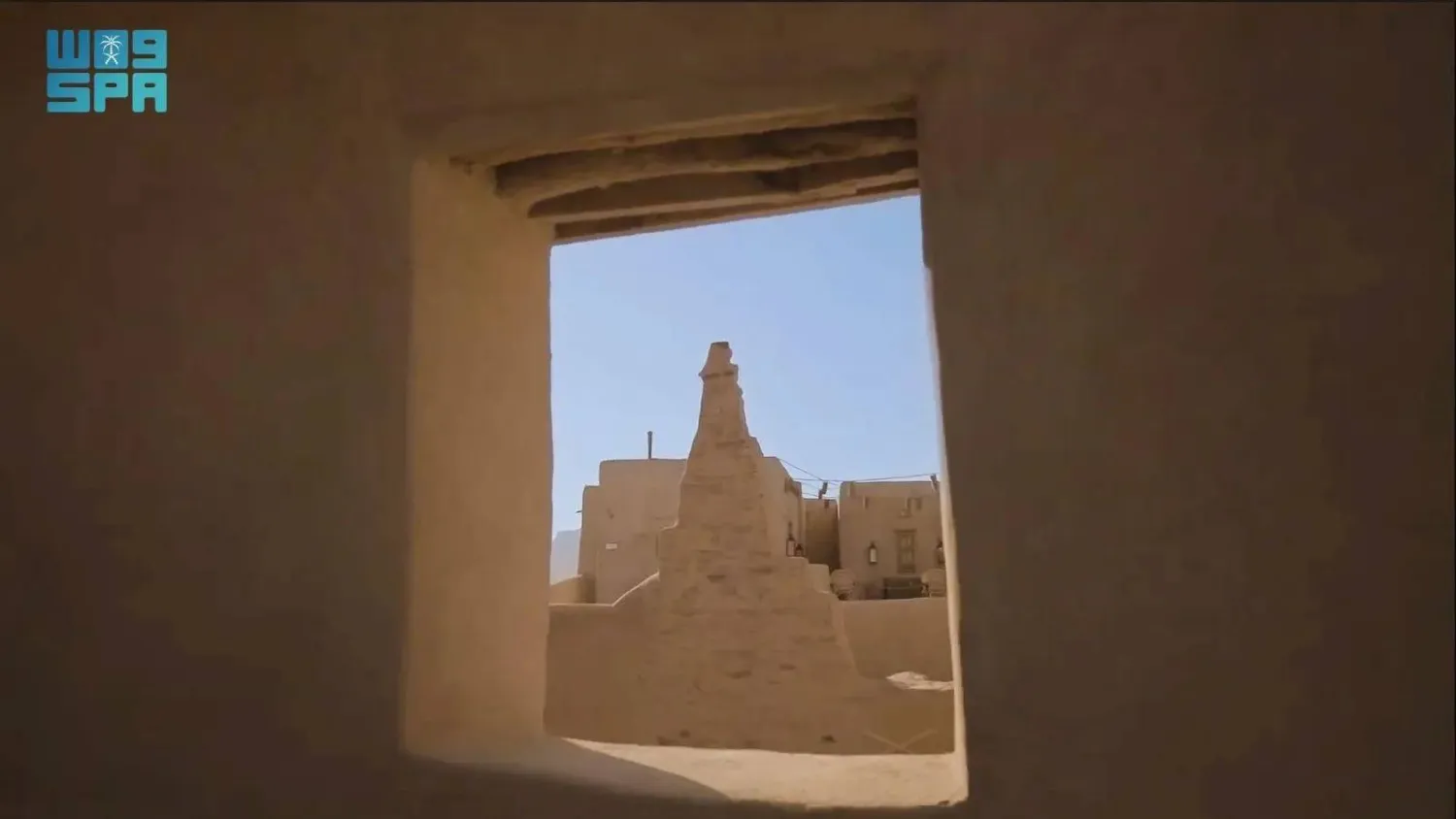The Royal Commission for AlUla (RCU) announced that archaeologists discovered a Bronze Age town in the Khaybar Oasis, in northwestern Saudi Arabia.
The discovery was published in the scientific journal PLOS ONE and announced on Saturday at a press conference held by the RCU in Riyadh. The conference highlighted the significance of the discovery to the Kingdom's standing in the field of antiquities, as well as on its cultural richness.
The discovery is proof of the Kingdom's commitment to safeguarding its cultural and historical heritage, as well as its desire to exchange knowledge and experience with the international community, and promote awareness about the common human heritage, consistent with the goals of the Kingdom's Vision 2030.
It also underscores the need to strengthen international partnerships, to present such a rich heritage to future generations globally.
The transition from a mobile pastoral life to a settled urban life in the region during the second half of the third millennium BC is illustrated by the discovery, which was made in the framework of the Khaybar Longue Durée Archaeological Project, led by Dr. Guillaume Charloux, researcher at the French National Center for Scientific Research, and Dr. Munirah AlMushawh, archaeological survey manager at RCU.
This change in paradigm challenges the previous notion that pastoral and nomadic society was the dominant socio-economic model in northwestern Arabia during the early and middle Bronze Age.
The research points out that regions such as Khaybar were significant urban centers that permanently maintained the stability of their communities, particularly with the introduction of agriculture. They also served as centers of trade and commerce for nomadic communities. The emergence of this urban design significantly influences the socio-economic paradigm of the region.
In the Bronze Age, the northwestern Arabian Peninsula was home to a significant number of nomadic pastoral communities, but the region also had a number of walled oases that were connected to one another and were located around fortified cities like Tayma.
The discovered town, called Al-Natah, provides evidence of a clear division, within forts and cities, of residential and funerary areas. The site encompassed an area of 2.6 hectares, was inhabited by 500 individuals between 2400 and 2000 BC until 1500 and 1300 BC. The Khaybar Oasis was surrounded by a 15-km-long stone wall to ensure its protection.
The study was conducted by the Royal Commission for AlUla in collaboration with the French Agency for the Development of AlUla (AFALULA) and the French National Centre for Scientific Research (CNRS).
The commission's Department of Archaeology, Collections and Conservation manages one of the largest archaeological research programs globally as part of its mission to elevate AlUla's status as a premier cultural heritage destination.
The Khaybar Oasis, located on the edge of the Harrat Khaybar volcanic field, formed at the meeting point of three valleys in a highly arid area. The remains of the town were discovered on the northern edge of the oasis, buried beneath layers of basalt rock for thousands of years.
The research team identified the archaeological site in October 2020, but distinguishing the structures and layout of the town proved challenging. In February 2024, the team employed field surveys, in-depth research, and high-resolution imaging to uncover more details of what lay beneath. Future excavations are expected to provide an even clearer understanding of the site.
The study offers an initial view of life in Al-Natah, where residents lived in traditional multi-story dwellings, typically using the ground floor for storage and the upper floors for living quarters. Narrow pathways ran between the dwellings, leading to the town center. Residents buried their dead in graves and tiered towers, signifying high social status by including valuable items like pottery or metal tools such as axes and daggers.
Town life was marked by skilled craftsmanship, with residents making pottery, trading it, working with metal, and adorning their clothing with beads. Their diet, based mainly on mutton, lamb, and grains, reflected a cooperative lifestyle, with the community reinforcing walls using dry stones and clay.
Besides Charloux and AlMushawh, historian Saifi Alshilali, a native of Khaybar, contributed to the discovery. The new findings add to a series of studies begun in 2018, which explore the history of ancient AlUla and Khaybar, including massive stone structures known as mustatils, stone traps, extensive funerary roads linking settlements and pastures, and stone circles used as dwellings.
Collectively, these studies reveal that Bronze Age societies in northwestern Arabian Peninsula were more sophisticated and interconnected with the wider region than previously believed.
RCU is currently supervising 10 archaeological projects, to which 100 archaeologists and specialists working in AlUla and Khaybar contribute.
This new discovery bolsters AlUla and Saudi Arabia's role as a global hub for archaeological research and cultural dialogue. It is announced immediately after AlUla World Archaeology Symposium 2024, which brought together archaeologists and cultural heritage experts from all over the world.
Themed "Moving Forward: Past, Present and Future in the Archaeology and Heritage of Mobile Communities", the symposium underscored AlUla's growing role in the global archaeological community.









